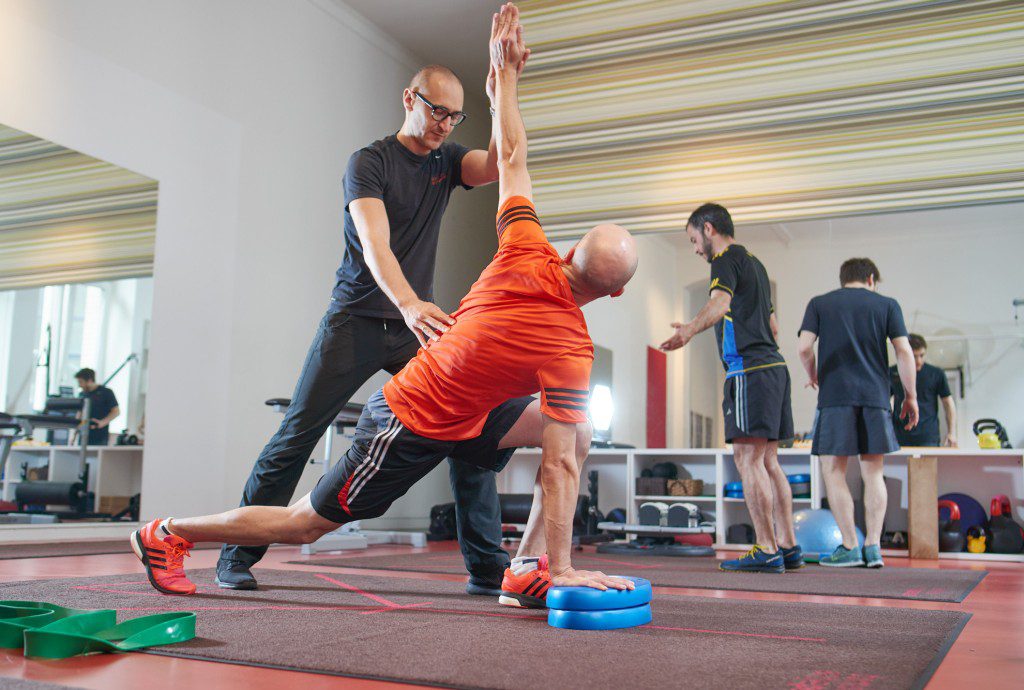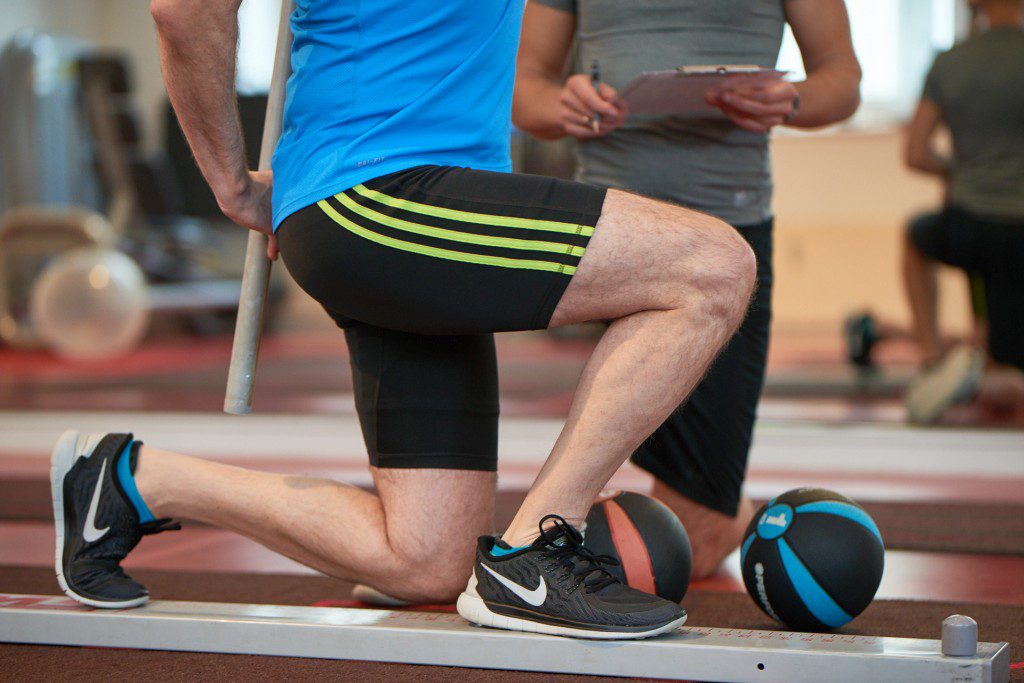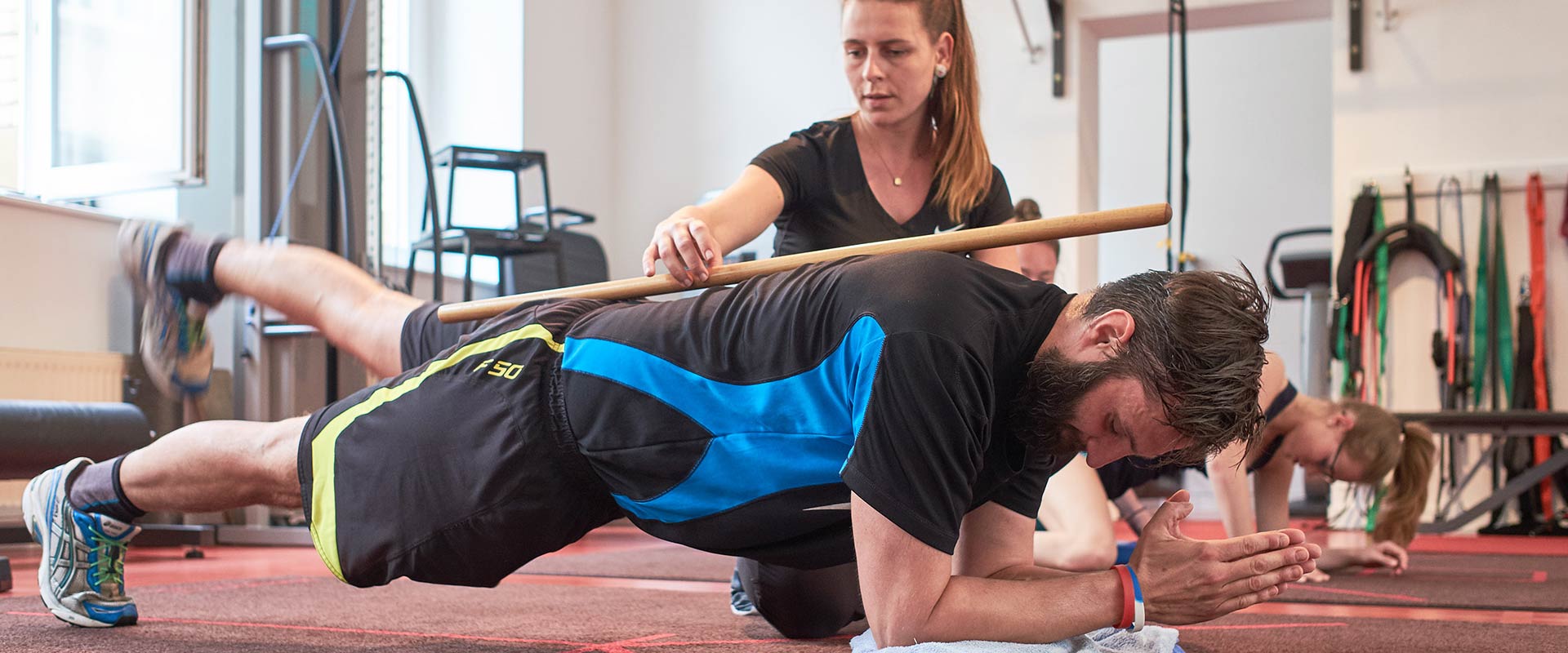Movements that require only a single muscle in isolation can be described as non-functional, while functional forms of movement integrate several muscles and muscle groups at the same time.
Since movements in everyday life or sports are never limited to just one joint or muscle, it’s important not only to address a specific muscle group but also to train the muscle chains from the larger surrounding network. In contrast to traditional strength training with equipment, functional training typically utilizes the body’s own weight to strengthen the weakened or injured areas.

Core Training
Strengthening the core of the body is an important part of functional training because a strong core is the only effective way to transfer strength to the outer extremities. Furthermore, strong and fully activated core muscles are the first step in stabilizing other parts of the body.
Functional training was originally used as part of a larger program to rehabilitate injured patients. In Germany, functional training became known through the collaboration of Jürgen Klinsmann and the American fitness trainer Mark Verstegen during the 2006 World Cup.

Functional training can be used in both competitive sports to prevent injuries and in popular and recreational sports to improve performance.


